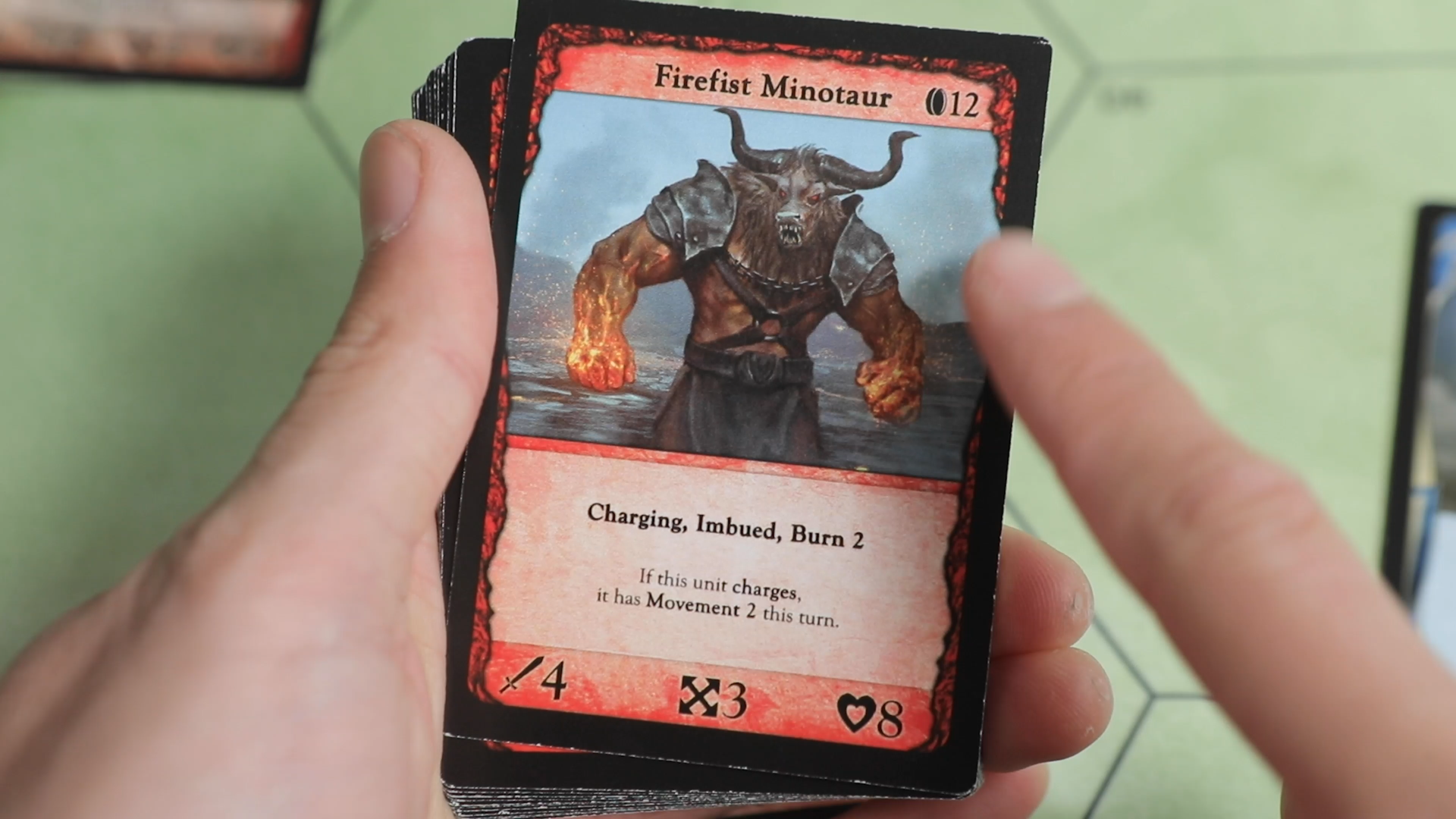Legacy’s Allure Review
Chess with cards.
A 1v1 luckless duel, set in a high fantasy world, to secure the map with your army, while watching out for your opponents’ units. Featuring a hex map with customizable army cards.
Video published January 24th, 2022

Control a unique hero, with spells and items.

Draft an army with different gold costs.

Completely luck-less hex based fighting.
This is a sponsored review.
Overview & How to Play
Legacy’s Allure is kind of akin to chess, with zero randomness. But then there’s modern geekdom theming, and you can craft and place your army entirely different every game.
The goal of the game is simple: if you started at the first player, you must control the middle hex at the end of round 7, then you win the game. If you don’t, then the other player wins the game.
In gameplay, players play rounds, in which they’ll take turns passing off doing one action each. When a unit takes an action, it exhausts, or turns sideways, meaning that unit can’t be used for the rest of the round. Once both armies are completely exhausted, the round ends.
So naturally on your turn, you pick an unused unit to do something: being moving, using an ability, or attacking. Attacking is done where you take a unit’s attack strength, and subtract it from the defending unit’s health. If the target drops to 0 life from that, the attacker must move into that hex—now that is certainly like chess.
But if the target survives the attack, because combat is a thing, they attack back at the attacker. That’s not like chess.
Once everyone has exhausted all of their units, its time for next round, and whoever took the last action ends up going second in the next round. A cool way to manipulate this is to ‘pass’ your turn, by not doing anything and exhausting a unit, essentially forgoing your action now, to try to go first in the next round.
Pros
We have real good reason to suspect lots of our audience will be at home looking at these cards. There’s a nice high fantasy art style, with detailed heroes, units, and even items you can equip to your hero. There’s even an included lore book to get players started in the world, full of explanations of why players need to fight so much.
This review will only cover the starting 2 blue and red decks of Legacy’s Allure, but even just off of this, the asymmetry potential is huge. The blue hero, Tristan, is a frontline beast of a man: he has a starting shield bonus to shrug off damage, and can exhaust enemies near him with his actual shield. So he’s great for securing and holding the middle of the map. On the other hand, the red hero, Kaarthul the Orc Wizard, is physically weak, but is capable of “Chain Lightning” to damage up to 3 units in one attack.
Legacy’s Allure is just filled with units with personality: Goblins with special abilities, charging Knights, gentle Priests, and flying Wyverns. The two teams of Tristan and Kaarthul have this diversity while also mirroring each other well, to make early games quite accessible.
The meat of this game is really from positioning nuance. As you move units, you’re constantly weighing the range of multiple units, whether it be their actual ranged attacks, or from spells they can cast, or from a Charge that lets them move + attack in the same action. Every turn is extremely thoughtful, as you think about controlling different territory, protecting weak units from potential charges, or moving glass cannon units to attempt flanks.
This possibility is IMMEDIATE, where players have access to so many units to move from your starting armies. Often times, the intensity stems from making a move, and then perhaps being scared that it was a misplay. But since there’s so many factors at play here with the open information, its very possible that your opponent doesn’t see that crucial flaw in your tactics that you see! Maybe he doesn’t see the possibility of his Wyvern to just SWOOP in and destroy your backline!
Then, you need to worry about the time limit of 7 rounds, where its a strategy to not kill everything, but play relative to time! If you went first, you just need to hold the middle, so maybe let the opponent come to you? Remember if your unit holding the middle kills any units through an normal attack, your unit has to move into that space, so you lose the middle! Uh oh, that’s gonna be hard to take back. This system is amazing for making sure games never drag past an hour, and come to an end with a clear winner.
There’s also this fascinating progression throughout the game, as armies whittle down, powerful units lose Mana, and thus the battlefield evolves. Players may find themselves ‘trading’ earlier on from units, as they both lose units to try to get advantage on the board. By round 3-4, this can lead to the board clearing up hard. It goes from a war with fronts, to a bunch of smaller skirmishes with damage stacking up everywhere. Maybe Tristan is busy holding his own against the Cave Troll on the middle, then there’s the quest for the Priest to escape a flanking Goblin, and then my Pikeman has managed to get to your backline, and now Kaarthul is in a bit of trouble. As mages start to run out of Mana, you’re also evaluating their new effectiveness.
One of the best mechanics here is the ‘pass’ mechanic, where you pass your turn in an attempt to get first player advantage for the next round. It’s very flexible as you’re never permanently passing, as well as how you can pass at ANY TIME, even if you have multiple units unexhausted, because going first is just that important. This also leads to fun mind games between players, where if someone starts passing earlier than usual, it’s easy to get jolted and think, “Wait, why is he passing? Does he see some crazy first move advantage in the next round?”
We didn’t get to experiment much with the army building here, but just know that if you’re ready to customize, there are COUNTLESS ways to draft, then place your armies of up to 80 gold. Drafting has its own skill ceiling and counterplay in the map positioning alone. If you’re not yet ready to draft, there’s plenty of included pre-drafted armies.
Cons & Nitpicks
There’s just a couple of growing pains with this, like how the game needed more physical rules to help us clarify gameplay. The included rule booklet is good to learn basics, not so good when talking about interactions with all the dozens of abilities in game. There’s an online FAQ that is useful, and we hope that will make its way into a box in the future.
Then the green mat starts to bunch up during gameplay as you pick up cards and rotate them, since the mat is really thin and slippery. Make sure it isn’t on a slippery surface underneath.
Final Thoughts
Legacy’s Allure is a rewarding, deep, yet fairly intimidating game to get into. The strongest players will ever be is in the beginning, with no luck to blame anything on. This box is just scratching the surface, with many fans likely interested in some level of tournament play here.
















